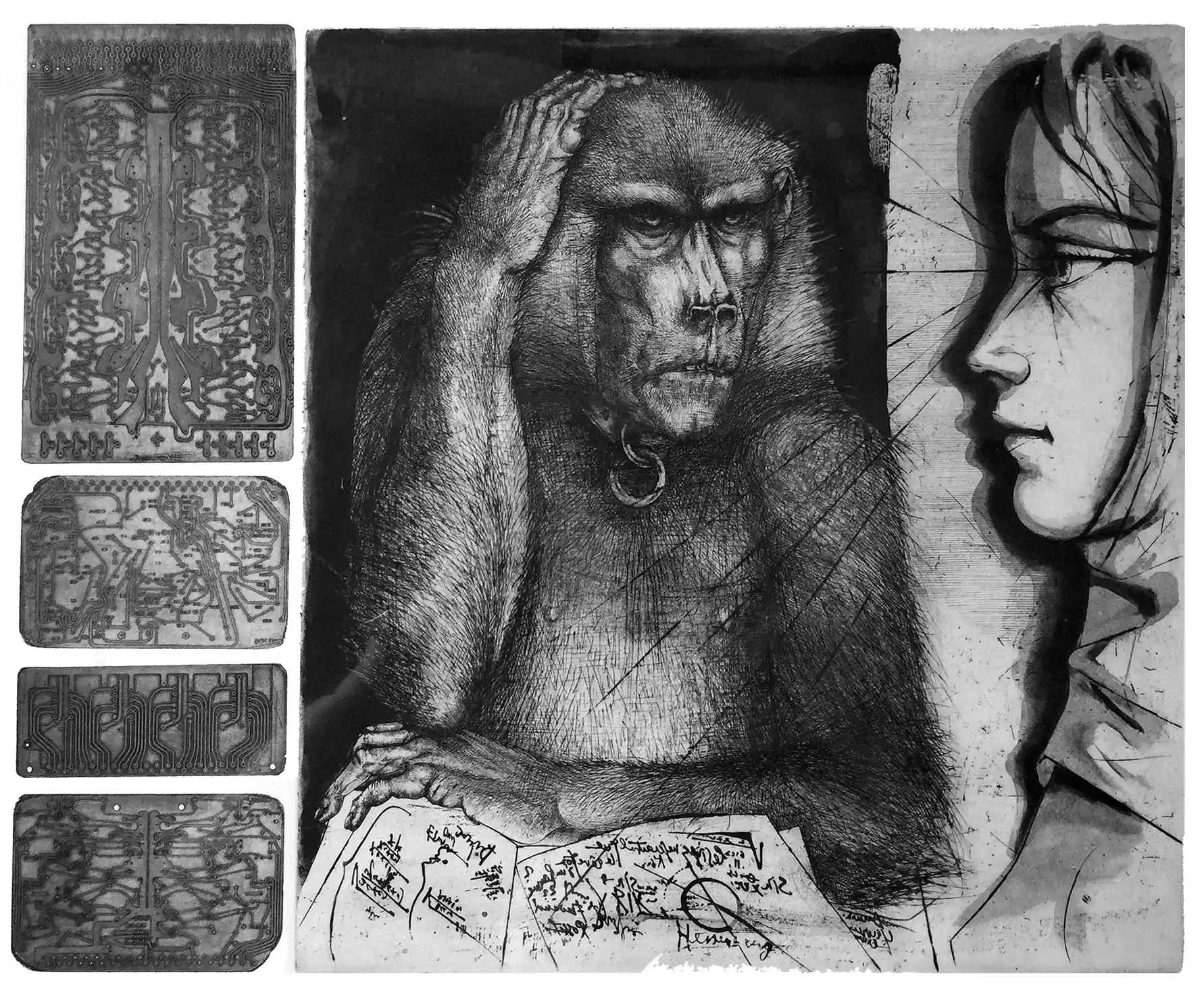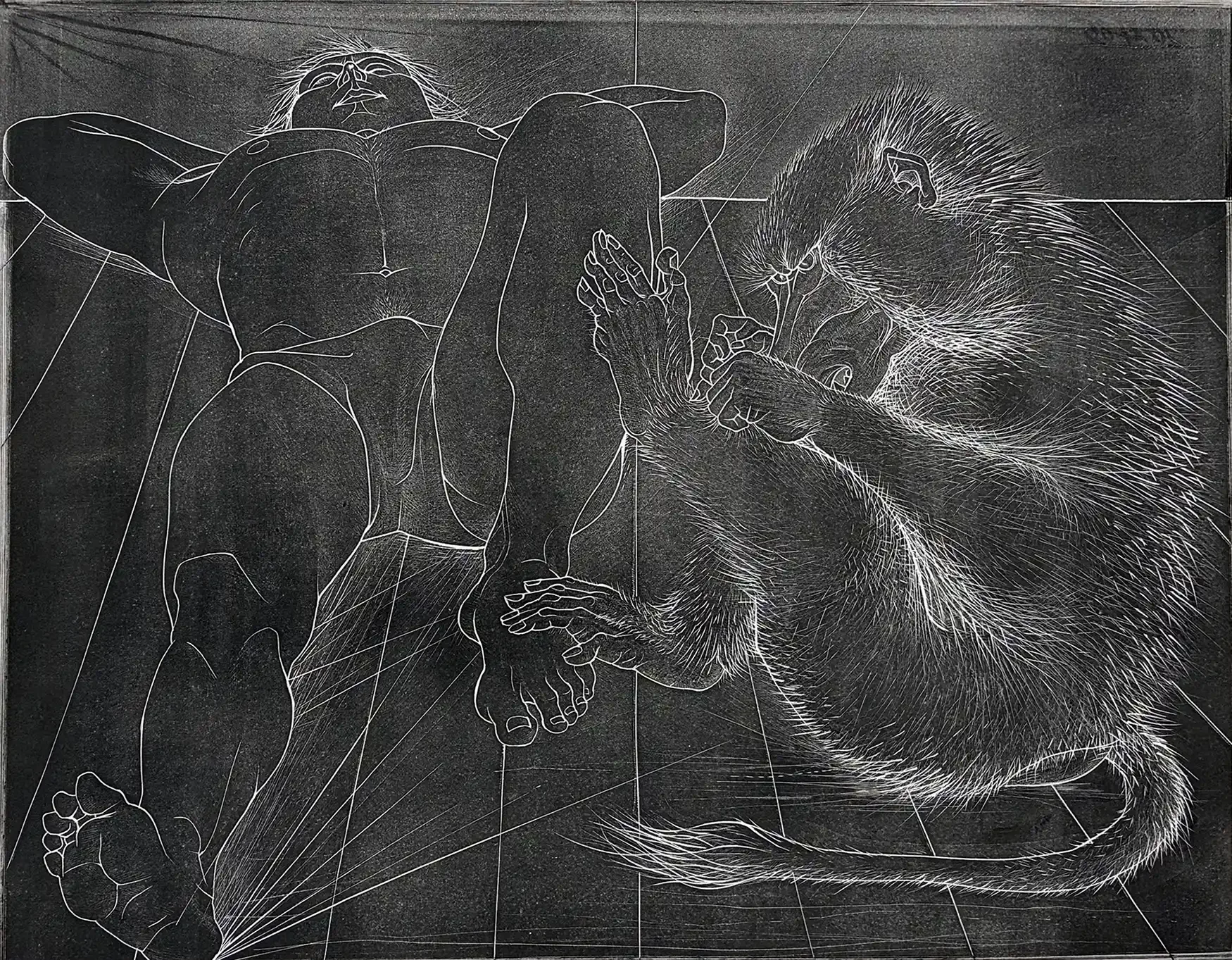Pierre-Yves Tremois - prints and biography
Pierre-Yves Tremois
Pierre-Yves Trémois (1921–2020) was a French printmaker, painter, sculptor, and illustrator celebrated for uniting science, mythology, and the human form into a singular artistic vision. A consummate draftsman, he mastered engraving and drawing with an exacting precision that gave his work a razor-sharp clarity, yet his subjects often pushed into enigmatic and provocative realms.
Trémois studied at the École des Beaux-Arts in Paris, where his brilliance was quickly recognized; in 1943 he was awarded the Prix de Rome, one of France’s most prestigious honors. While his classical training grounded him in tradition, his imagination led him elsewhere. Throughout his career, he explored anatomy, eroticism, zoology, and metaphysics, blending them into compositions that were at once cerebral and sensual. His art often presented scientific imagery—microscopic organisms, skeletal structures, or animal forms—juxtaposed with mythic or surreal elements, a dialogue he described as a “fusion of rational and irrational worlds.”
Central to Trémois’s work was his line: fine, incisive, and controlled, yet never cold. Human and animal figures appear to mutate or merge with symbolic motifs such as serpents, skulls, insects, or mechanical forms. These images evoke Renaissance anatomical studies as much as they echo modern surrealism, yet remain unmistakably his own in style and intention.
His intellectual breadth made him a natural collaborator with great literary figures. Over the decades, Trémois illustrated works by Baudelaire, Rimbaud, Freud, and others, creating editions where text and image engage in layered dialogue. His standing in French cultural life was confirmed when he was elected to the Académie des Beaux-Arts and appointed Peintre Officiel de la Marine, an honor reserved for artists whose work embodies France’s maritime heritage.
Across a long and prolific career, Trémois remained a visionary. His art challenges viewers not only with its technical mastery but also with its willingness to confront the mysteries of body and spirit. Through his unique fusion of science, myth, and imagination, he created a body of work that continues to intrigue and inspire.


